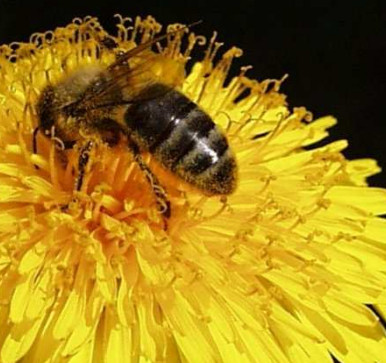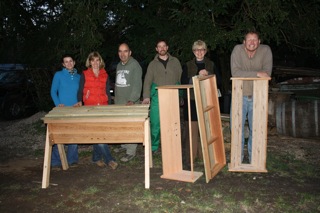Last week Tim ran a weekend course at his workshop, teaching how to build beehives, and it prompted considerable discussion about the health and viability of the UK’s honey bees.
The importance of bees for plant pollination is enormous and, since the devastating arrival of the varroa mite, active bee management is essential for bee survival. There are certainly some feral bee colonies in the wild, but sadly it’s currently not known whether we still have any colonies at all of our native black honey bee Apis mellifera mellifera.
The course was teaching how to build a simple beehive know as a “top bar hive” – a low cost alternative to the standard Langstroth hive that is becoming increasingly popular with amateur bee-keepers. In a top bar hive the bees build their comb suspended from a rail or “top bar”, without the constraints imposed by the frames of a Langstroth hive. The main reasons for the increasing popularity of the top bar hive are that only a small part of the colony is exposed when inspecting the hive, and that honey is harvested by taking individual combs, rather the whole “super” of a Langstroth hive (containing 8-10 frames). This makes bee-keeping in a top bar hive much less invasive, and proponents claim this approach has significant benefits for the health and prosperity of the hive.
It isn’t all upside, of course. The main drawbacks of the top bar hive are lower productivity, and the honey can’t be extracted by centrifuge so it’s usually produced as a honey comb – something some people consider a special delicacy. But for many people the primary role of bees is to pollinate plants, and the fact you can only harvest part of the honey is a fair trade-off.






